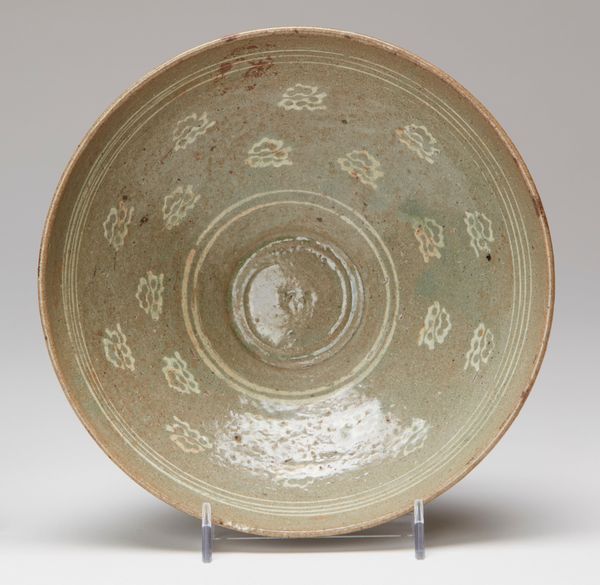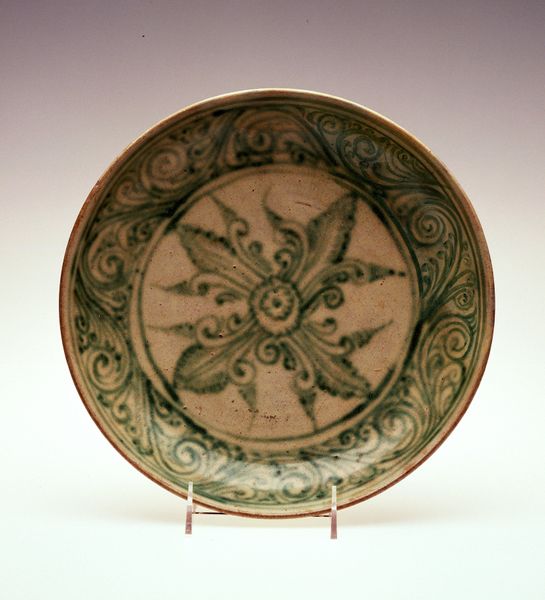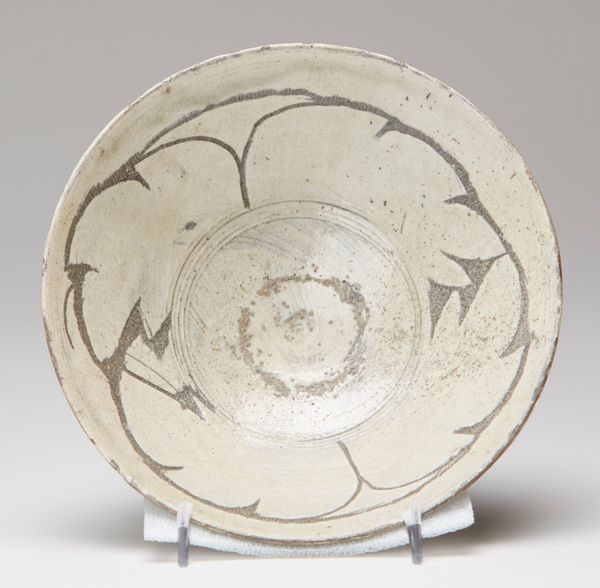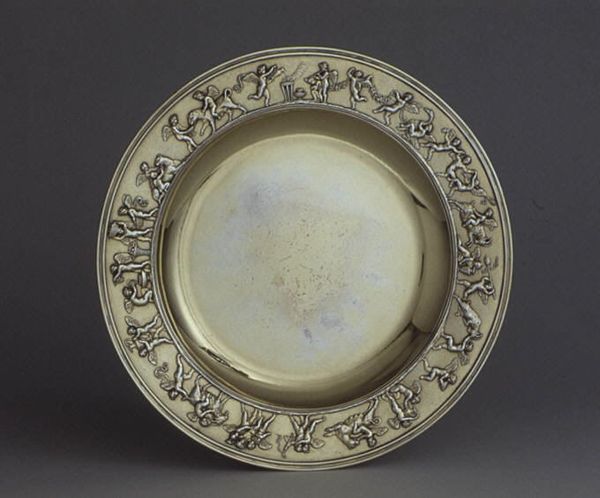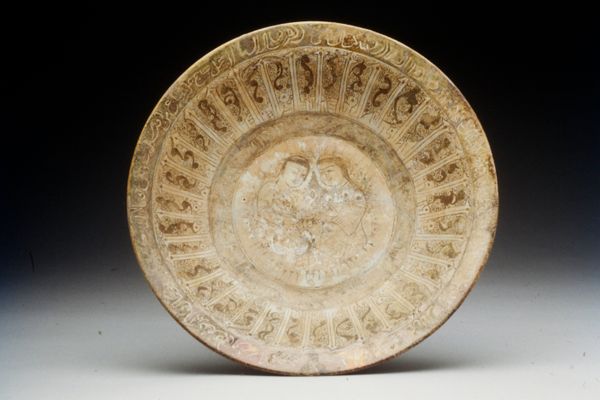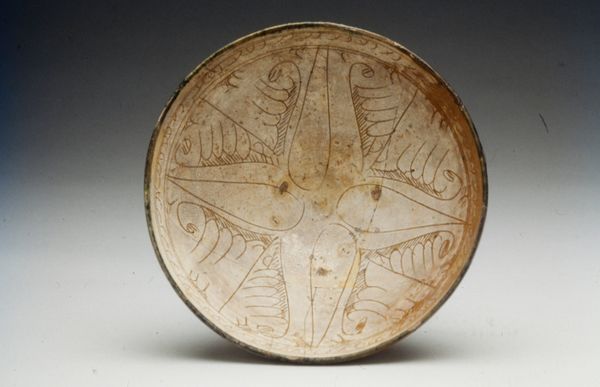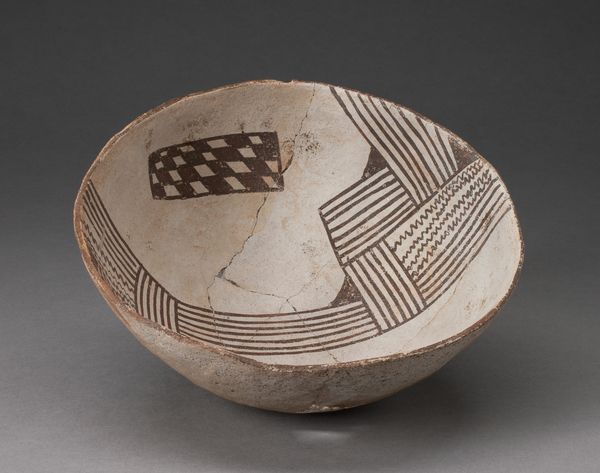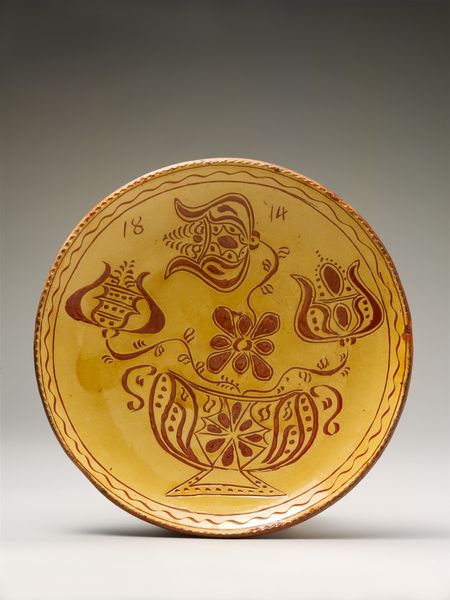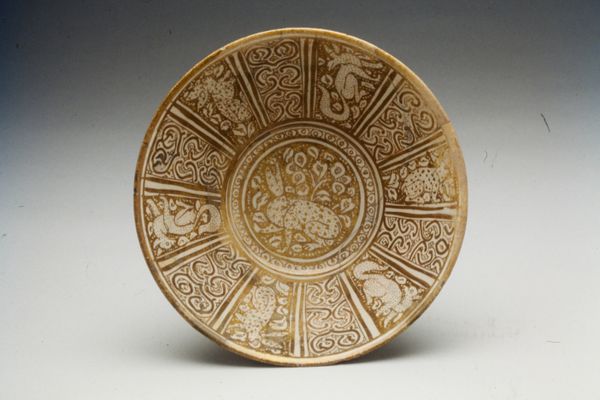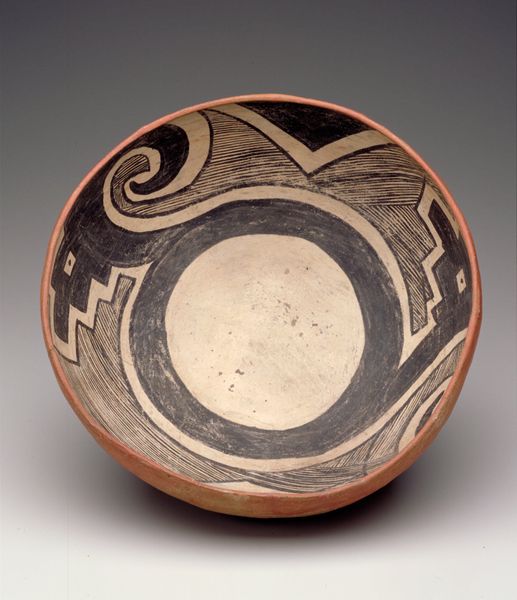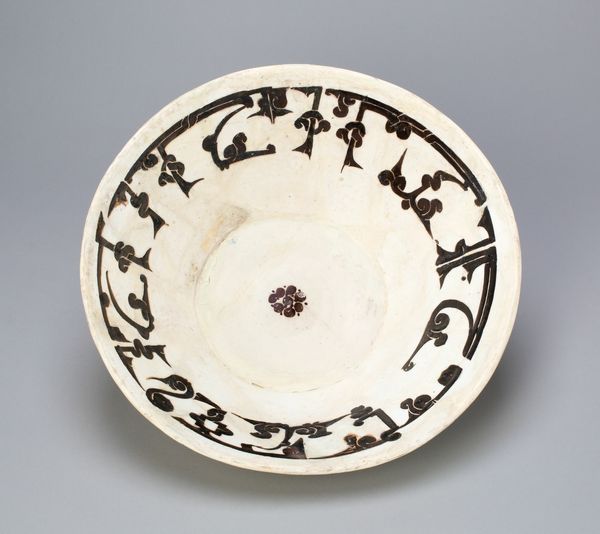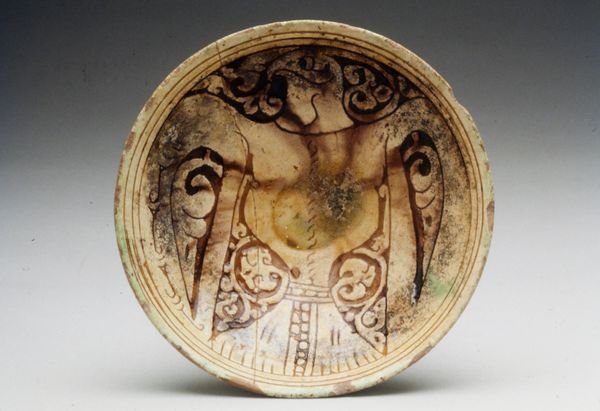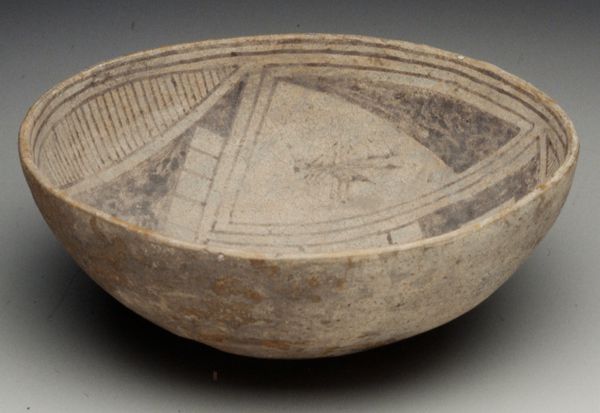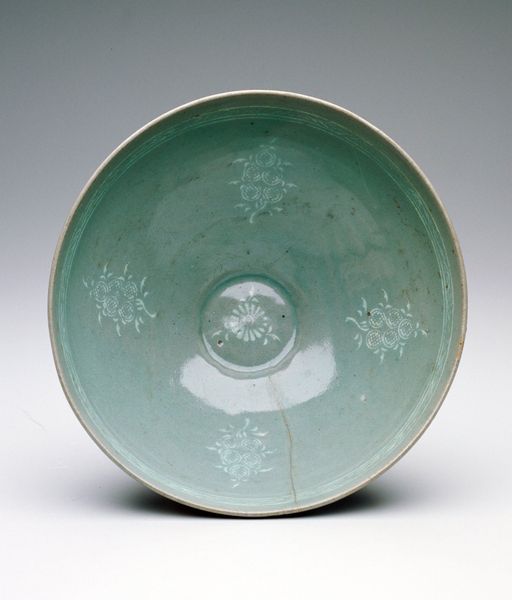
ceramic, earthenware
#
medieval
#
ceramic
#
earthenware
#
stoneware
#
geometric
#
ceramic
#
islamic-art
#
decorative-art
Dimensions: 2 1/2 x 7 in. (6.35 x 17.78 cm)
Copyright: Public Domain
This understated bowl, of unknown origin, is adorned with subtle leaf patterns, emblems deeply rooted in the human psyche. The leaf motif, a symbol of life, growth, and renewal, has traversed time and cultures, appearing in ancient Greek wreaths, medieval tapestries, and modern designs. Each iteration carries echoes of its past, yet adapts to the zeitgeist of its era. Consider the laurel leaf, once adorning victors in classical times, now a mere decorative flourish. This evolution speaks to the dynamic nature of symbols, their meanings shifting with the tides of history and collective memory. Perhaps, subconsciously, the creator of this bowl tapped into this deep well of symbolism, understanding the inherent appeal of nature’s bounty. The cracks and the pale surface of this bowl evoke feelings of fragility and transience, reflecting our own fleeting existence. Thus, the leaf motif, like all symbols, undergoes a perpetual metamorphosis, resurfacing, and evolving in tandem with the human experience.
Comments
minneapolisinstituteofart almost 2 years ago
⋮
Made by potters in Iran, this fine white bowl imitates ceramics from Song period China (960-1280). The bowl's shape, light incisions, moulding, and vegetal motifs are inspired by finely thrown Chinese Dingware, pointing to international trade markets and the vogue for Chinese ceramics. Iranian potters used a recipe derived from ancient Egyptian ceramic traditions, which combined ground quartz, white clay, and ground glaze to make a lightweight stone paste that allowed for thinner walls than slip-covered earthenware.
Join the conversation
Join millions of artists and users on Artera today and experience the ultimate creative platform.
